Happy 2019.
At the beginning of each new year, we all tend to make a list, be it mental or physical, or things we wish to accomplish. Resolutions, if you would. I could get philosophical about why it is we do this, new beginnings, new calendars, blah blah blah, but the fact of the matter is: It’s just a thing we do. And the more people talk about doing it, the more the rest of us start thinking about what we have to take care of. Thanks, Social Media.
My list this year is mostly mental–with a little bit of verbal (as in, if I tell people I’m doing something, hopefully that makes me do it.) On my mental list: take in fewer calories (have been sort of doing that), exercise every day (already failed that one), clear the clutter–I think my personal reason for the “fresh start” bug every New Year is because of the massive amounts of stuff that came into my house the week before, but a big thanks to Marie Kondo!
So maybe this one was obvious, but a goal I set was to get back to doing this blog now and then. If you are a “follower” of this page, then you may have thought a new blog showed up in your list, and that would be because my last one was February 8 of 2018. I don’t have a solid reason for that, except to say that, well, I just don’t have a particular reason. But I enjoy doing it, I get some fun feedback occasionally, so here we are. In fact, my last dip into this blog was to change its name. Last February, with a little confusion, I figured out how to change the name on WordPress. Then followed the Instagram and Ravelry names. Facebook was being a little bureaucratic about it and wouldn’t approve the request to change the name. They claimed that “Of Sticks and String” is not in any related to the previous topic of “Cool People KNIT.” Obviously the person making these decisions doesn’t use sticks or string. Anyone friendly with Mark Zuckerberg and willing to help me out? (Facebook hack tip: Change the name in increments. I went from “Cool People Knit” to “Of Sticks and String/Cool People Knit” to “Of Sticks and String.” So far the Facebook police haven’t caught on and busted me.)
Last year was a good year for goal setting and accomplishing, both in crafting and non-crafting realms. I set the goal of running 10 miles per week and 50 miles per month (which, for you math types, means I had to run more than my required 10 miles at least some of the weeks each month). I had a small number of weeks in which I did not make my 10 mile goal, but I made the 50 each month and finished the year at almost exactly 600 miles–not to brag or anything, but I think I ended up a quarter mile over.

I also wanted to learn and “perfect” magic loop, and I can happily report that I have used it successfully for socks, hats, mittens, and one pair of boot cuffs. Another item on the technique bucket list was toe-up socks. In fact, DPN’s are sort of off my list for now. I did two pairs of Skew Socks and love the pattern, but I found that I need to figure out a better way to turn my heel soon enough–I ended up with one pair that was too big and found a home with someone else and another pair that is wearable but still a little too long. I’m finishing up a pair of vanilla toe-up socks now, and so far they seem like I’ve gotten the length right, so the Skew Socks might get another try soon. I also HAD to finish the border on my Great American Aran Afghan, and I cast that on at the beginning of January (I believe a snow day had something to do with it) and finished it by late February. That brought a 2 1/2 year project to an end.

I also checked off a couple specific projects I wanted to tackle–gift shawls for my mom and my aunt, a Hamilknit hat (supposed to be for my daughter, ended up going to the music teacher, so have to cast on another), and perhaps most satisfying of all, the Joan of Arc sweater for me. This last one was my favorite, and not just because it’s mine, but because I took the time to go back and fix any mistakes (if you don’t like it now, you won’t like it 10 rows from now–Knitmore Girls gospel), and because I revised the things I was not happy with–I made the neckline come up a little higher so it doesn’t slouch off my shoulders and added several inches to the hem portion so it comes down to a comfortable length. Oh, and the Seven Sisters Arts yarn was beautiful to work with and gorgeous to look at–and bonus, I purchased it at a discount.
Now 2019 is upon us; actually it’s 16 days upon us. I’m a list maker. There is nothing more satisfying that slapping that “√” next to a completed item. In real life, my to-do lists usually contain a combination of grading, lesson plans, kids’ projects, laundry, grocery shopping, and the gym. And lets be frank, those lists are lousy. When those tasks are done, I always have a few knitting projects, or a good book (or both depending on how well the book or Kindle can balance on my knee), to let me have some “me” time. That time is more and more precious, so I also think having some advance plans to make the most of it can let me get a lot done without feeling like I’m making knitting a chore.
But what I really want to make myself focus on is a couple of languishing projects. These are “WIPs” that I found myself pushing to the side for one reason or another, and now they’re just taking up space and periodically reminding me that I shouldn’t get too wrapped up in something all-consuming until I at least get some progress made on these.
Waiting for me, there’s the Instagram photos, podcast chats, and other siren song topics that will get me distracted and plotting other projects. But in the meantime, the checklist progresses.


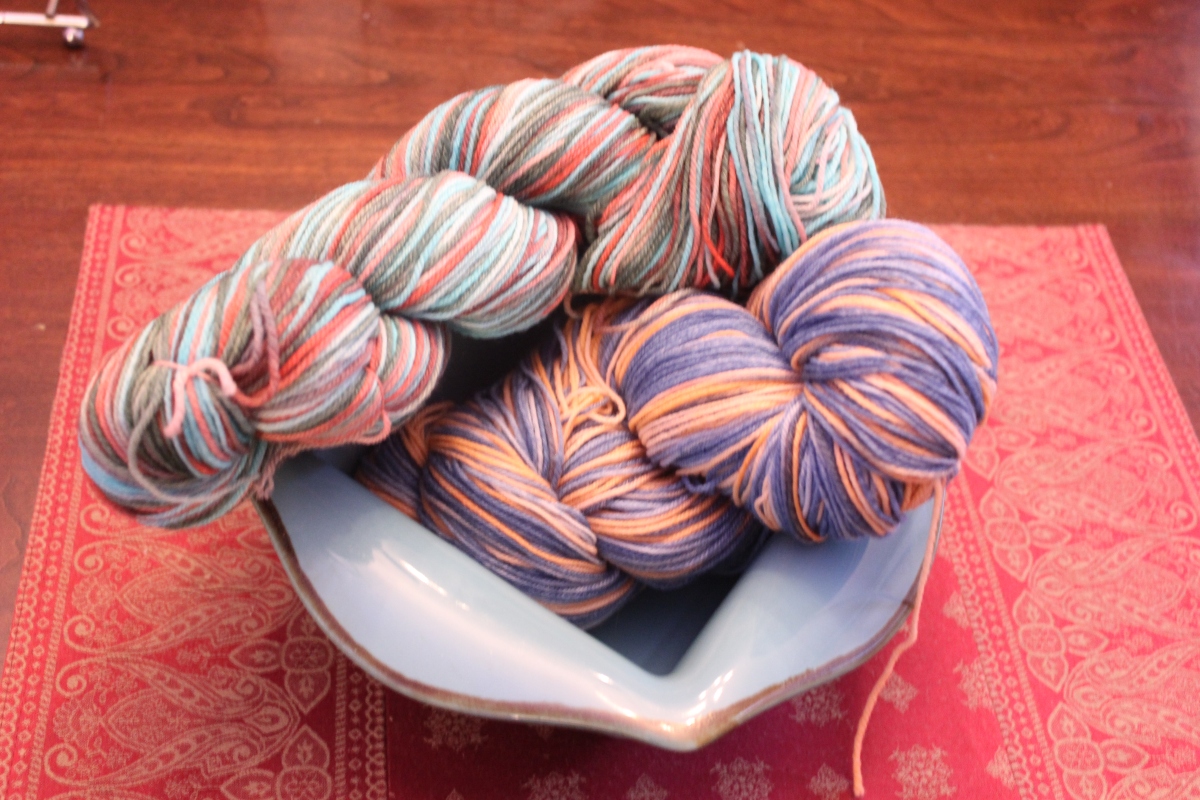

 site itself takes a little more effort and tinkering to change once it’s established.
site itself takes a little more effort and tinkering to change once it’s established.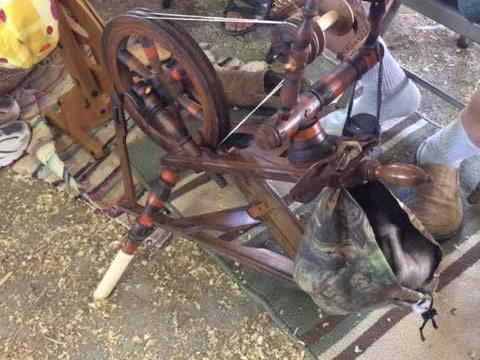
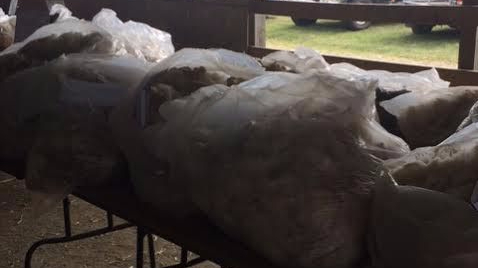


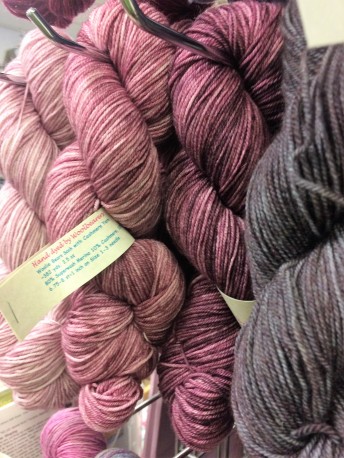 I also wonder what these commentators “know.” Do they “know” that she in fact has a Local Yarn Store (or LYS in knit-speak) close enough for her to patronize? Many parts of the country and the world are not located in an area where a store selling yarn would thrive. Do they “know” that her budget allows her to purchase yarn that can be considerable more expensive than Red Heart? Do they “know” she has been knitting long enough to have become interested in pricier yarns? Do they “know” that knitting is her only hobby and so the type of yarn she is using is something that receives a great deal of attention and thought?
I also wonder what these commentators “know.” Do they “know” that she in fact has a Local Yarn Store (or LYS in knit-speak) close enough for her to patronize? Many parts of the country and the world are not located in an area where a store selling yarn would thrive. Do they “know” that her budget allows her to purchase yarn that can be considerable more expensive than Red Heart? Do they “know” she has been knitting long enough to have become interested in pricier yarns? Do they “know” that knitting is her only hobby and so the type of yarn she is using is something that receives a great deal of attention and thought?








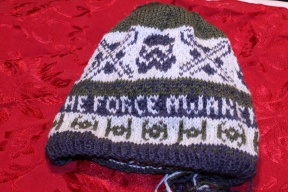 hought of the sons of a good friend, both of whom take after their dad in being Star Wars obsessed. I finished one over the course of about four evenings and will be starting the second one
hought of the sons of a good friend, both of whom take after their dad in being Star Wars obsessed. I finished one over the course of about four evenings and will be starting the second one

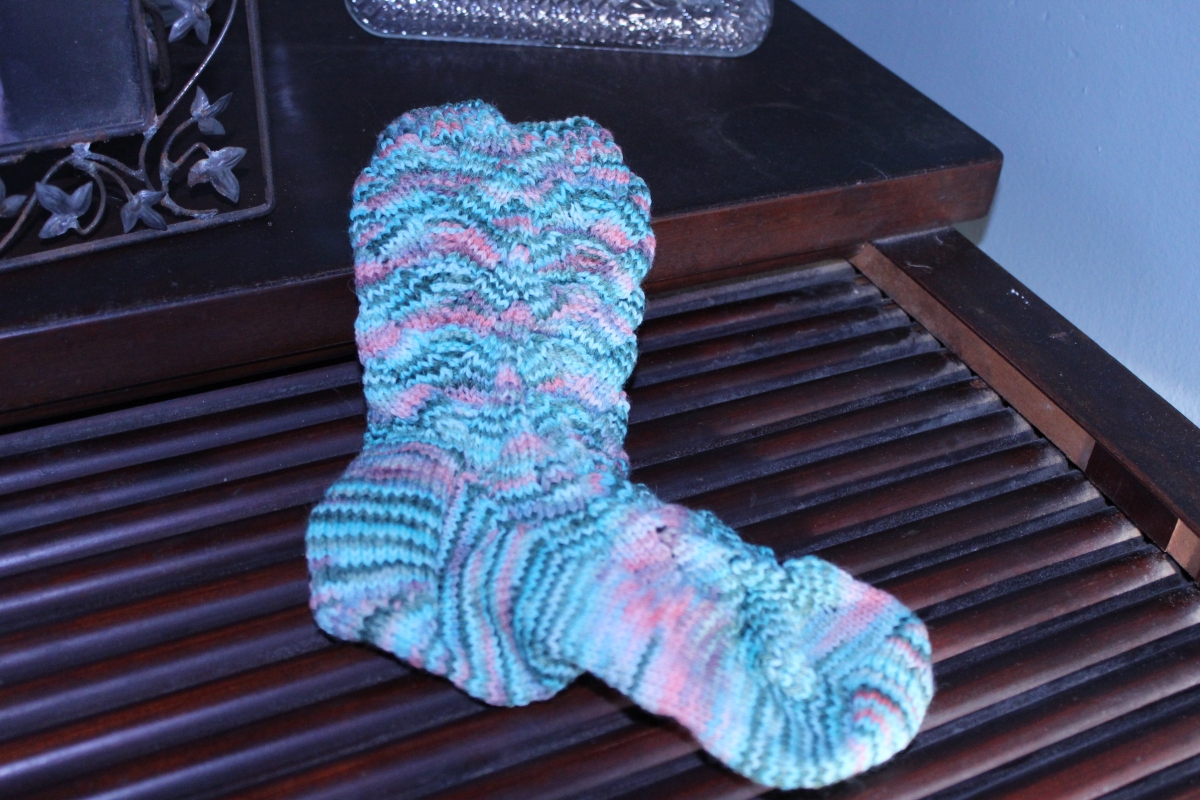

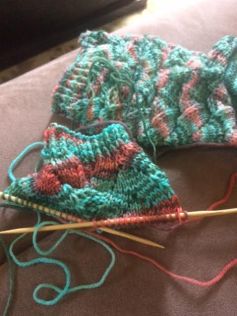

 (let’s just call it 1b), using yarn from roughly the same section in the hop
(let’s just call it 1b), using yarn from roughly the same section in the hop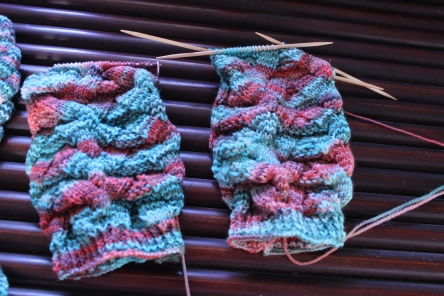 es that the color will more closely resemble Sock #2. When I finish that ankle, or run out of that section of yarn (whichever should happen first), I’ll begin “frogging” Sock #1 so I can finish both of these. All the while consuming wine.
es that the color will more closely resemble Sock #2. When I finish that ankle, or run out of that section of yarn (whichever should happen first), I’ll begin “frogging” Sock #1 so I can finish both of these. All the while consuming wine.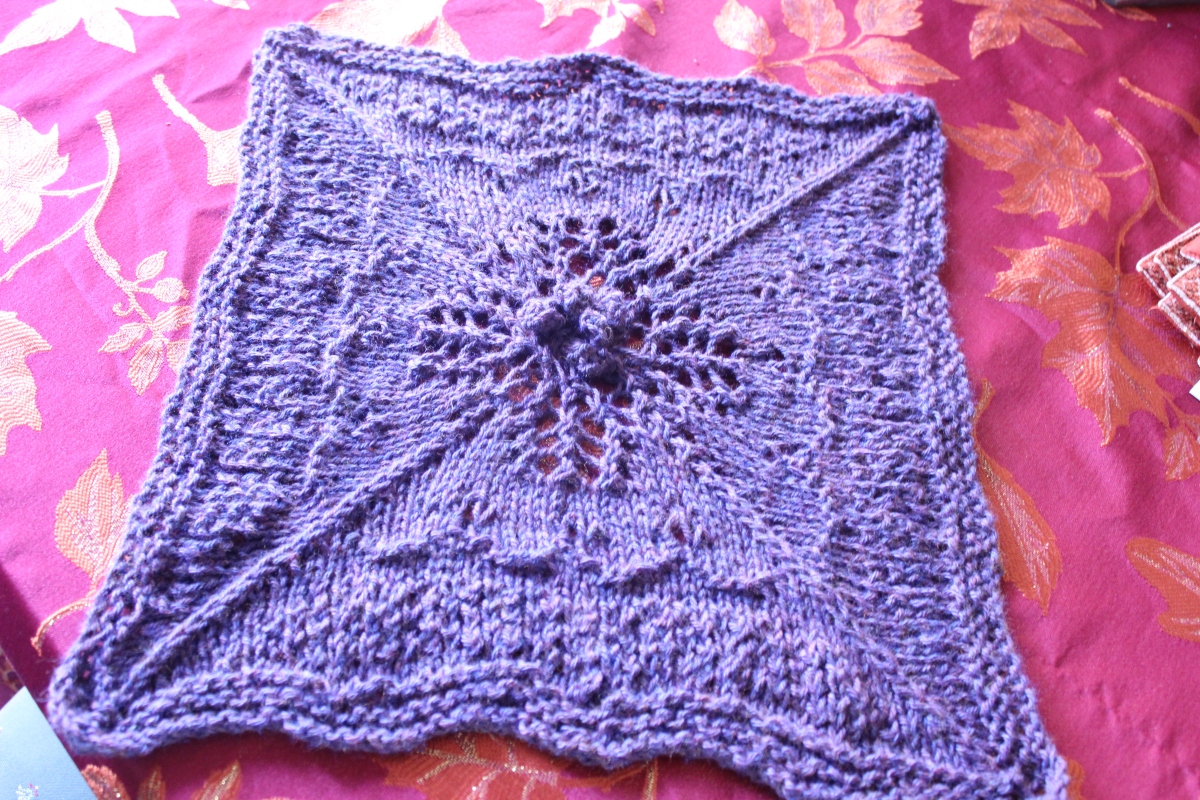


 yarn came out. And so began the re-knitting. And it was the right decision. Of course, the gorgeous merino wool is also just about the warmest material on Planet Earth, so now he has a beautiful sweater that he wears on that one day of the year the temperature in this area reaches 7 degrees Fahrenheit. (Note to self: No worsted weight yarn for future sweaters for him.)
yarn came out. And so began the re-knitting. And it was the right decision. Of course, the gorgeous merino wool is also just about the warmest material on Planet Earth, so now he has a beautiful sweater that he wears on that one day of the year the temperature in this area reaches 7 degrees Fahrenheit. (Note to self: No worsted weight yarn for future sweaters for him.) r finished pieces, figuring I would sit on it before ripping it out. Once my other squares were done, I looked at it again, and could not escape the conclusion: A frogging was definitely in order. So I frogged. And ripped. And unraveled. Without a glance back. And now it’s just a simple matter of re-knitting, right? I already it once (albeit with some mistakes, apparently), and I’ve knit 24 other squares.
r finished pieces, figuring I would sit on it before ripping it out. Once my other squares were done, I looked at it again, and could not escape the conclusion: A frogging was definitely in order. So I frogged. And ripped. And unraveled. Without a glance back. And now it’s just a simple matter of re-knitting, right? I already it once (albeit with some mistakes, apparently), and I’ve knit 24 other squares.

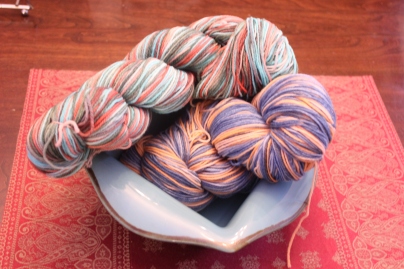


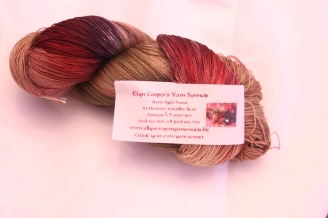
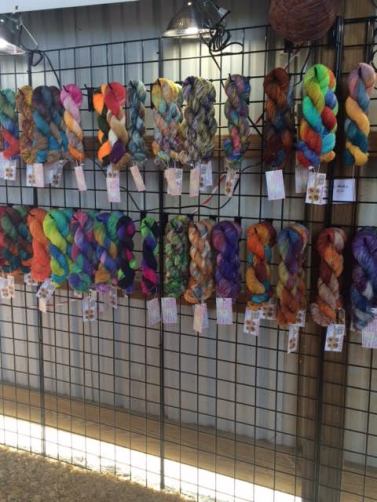 ome very unusual color schemes, and a great deal of the yarn was hand made and hand dyed by the shop owners, so obviously these weren’t items that I could just pick up at a later date. Fortunately, the fiscally conservative (and as yet unpaid since the school year has just begun) side of me was present that day, so I limited my buying.
ome very unusual color schemes, and a great deal of the yarn was hand made and hand dyed by the shop owners, so obviously these weren’t items that I could just pick up at a later date. Fortunately, the fiscally conservative (and as yet unpaid since the school year has just begun) side of me was present that day, so I limited my buying.
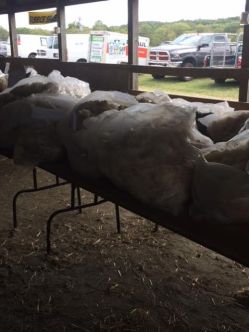
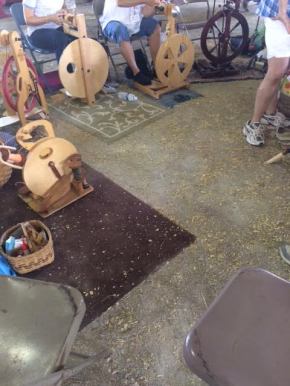






 ia Morris, with decoration, with a simple shawl around Lydia’s shoulders and a wrap around John’s cane. According to the Morris Arboretum web site, the work will be on display into the fall “until it succumbs to the elements.” Because this display was an unexpected part of our trip, I hadn’t read about the artist or the pieces prior to our arrival, so I hadn’t even k
ia Morris, with decoration, with a simple shawl around Lydia’s shoulders and a wrap around John’s cane. According to the Morris Arboretum web site, the work will be on display into the fall “until it succumbs to the elements.” Because this display was an unexpected part of our trip, I hadn’t read about the artist or the pieces prior to our arrival, so I hadn’t even k now where to look or what to look for. The kids spent the bulk of the day scavenger hunting for stuffed squirrels throughout the park, so I later asked some of the employees at the visitor center if that game was part of the exhibit, but they said that it was not. Nevertheless, I snagged a photo of a squirrel hidden among some of the yarn bombing. (As another PSA, if you live in the Philadelphia area, or if you’re visiting, this entire park, even once the “Wrapped Up” exhibit is over, is well worth a trip.
now where to look or what to look for. The kids spent the bulk of the day scavenger hunting for stuffed squirrels throughout the park, so I later asked some of the employees at the visitor center if that game was part of the exhibit, but they said that it was not. Nevertheless, I snagged a photo of a squirrel hidden among some of the yarn bombing. (As another PSA, if you live in the Philadelphia area, or if you’re visiting, this entire park, even once the “Wrapped Up” exhibit is over, is well worth a trip.